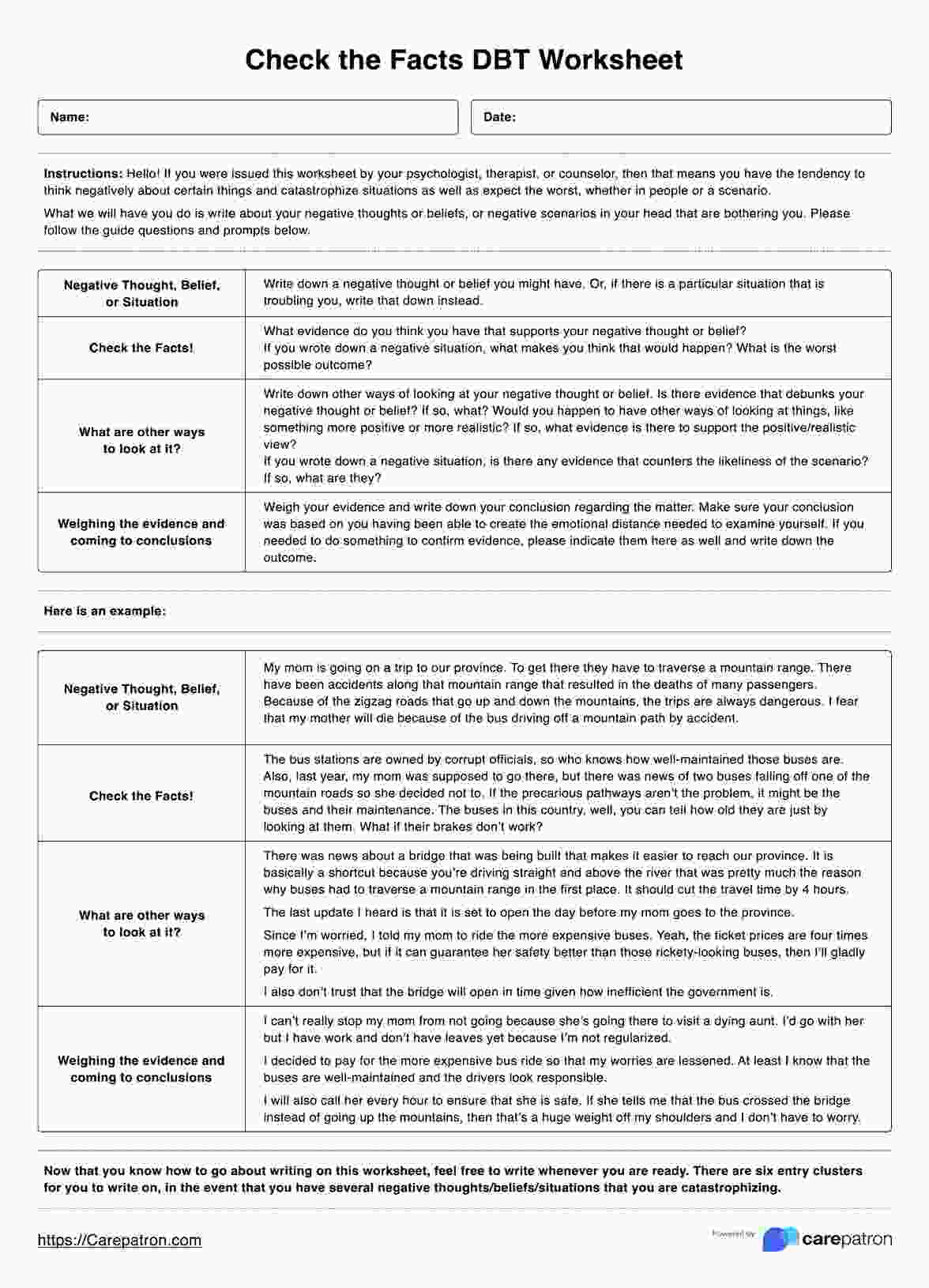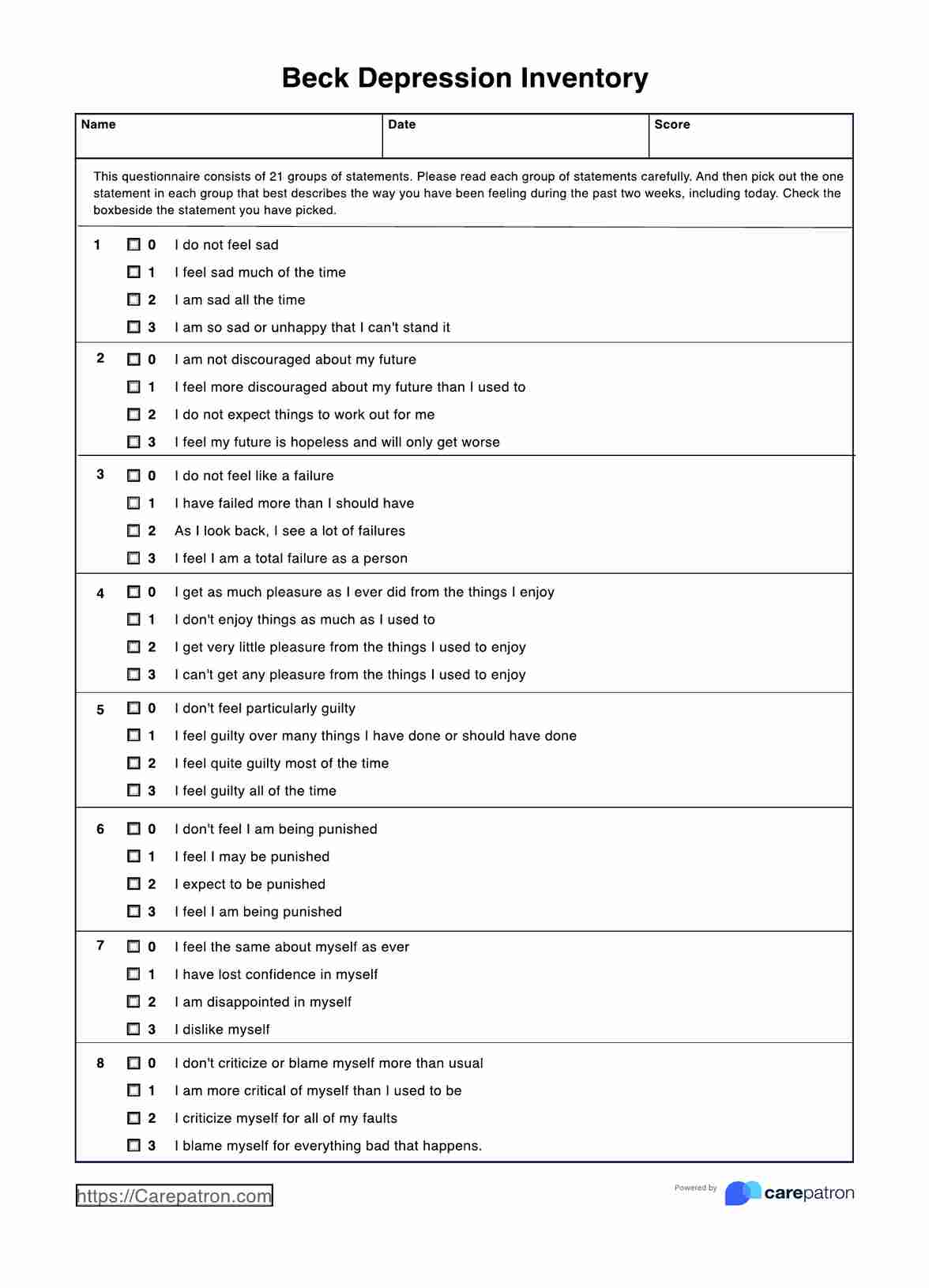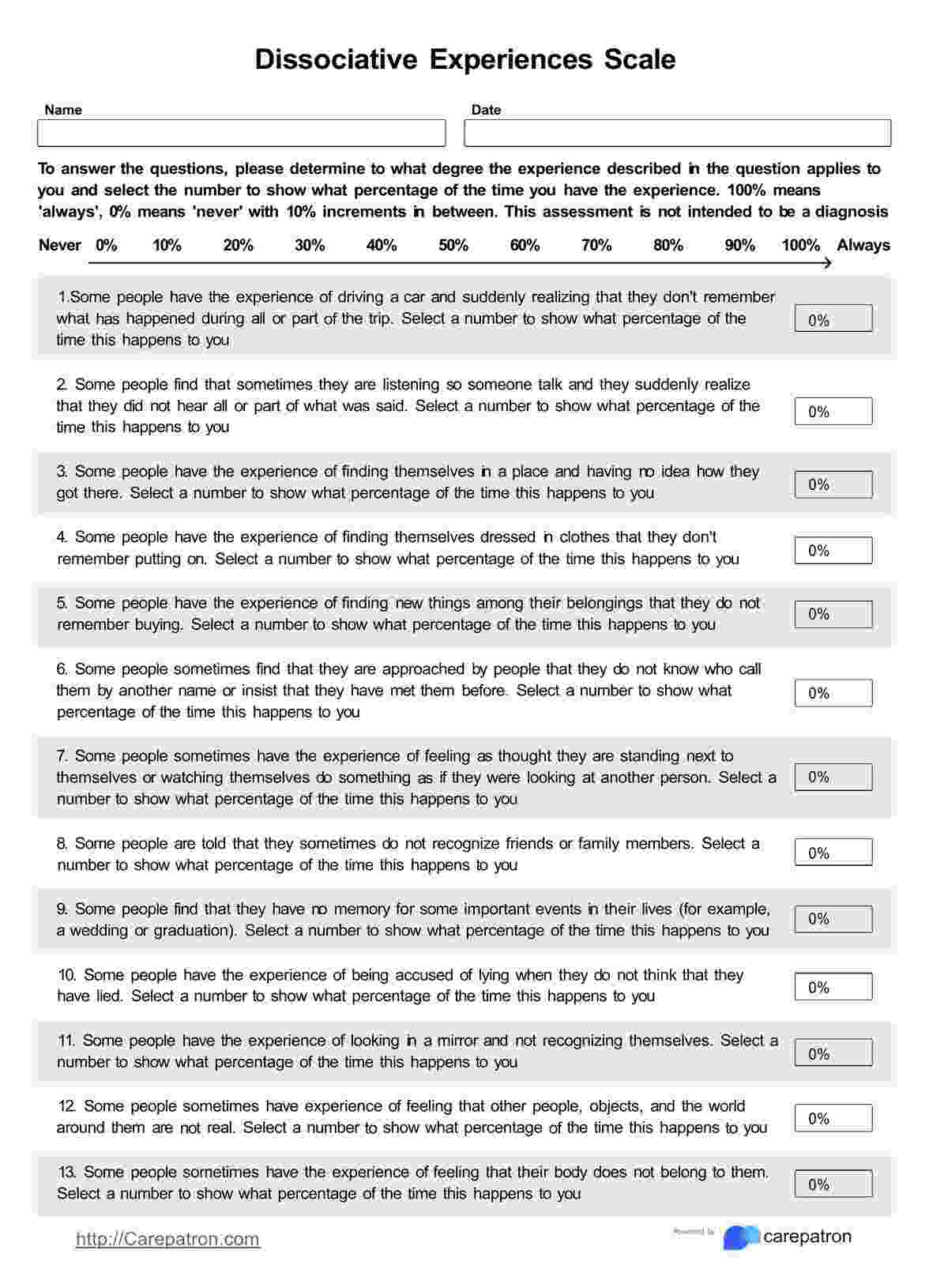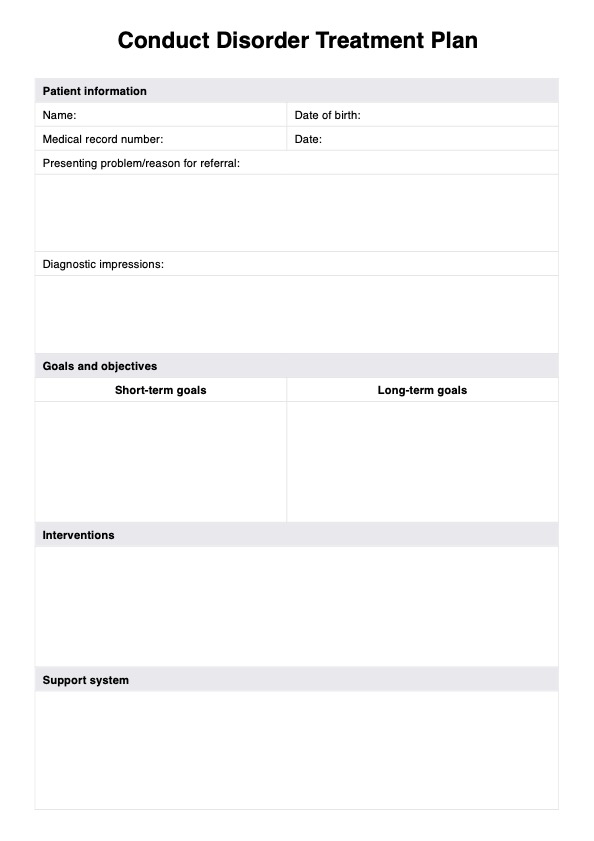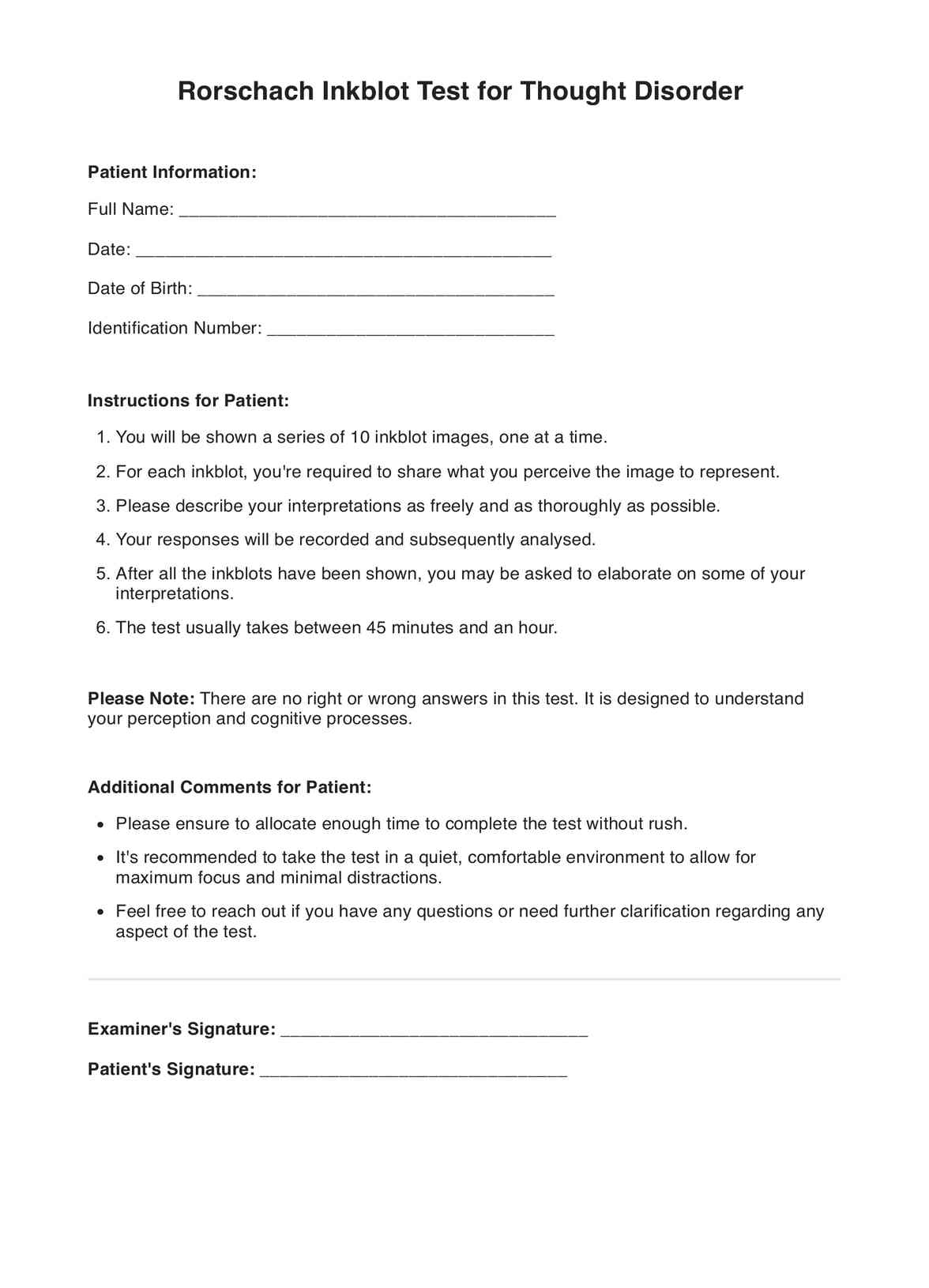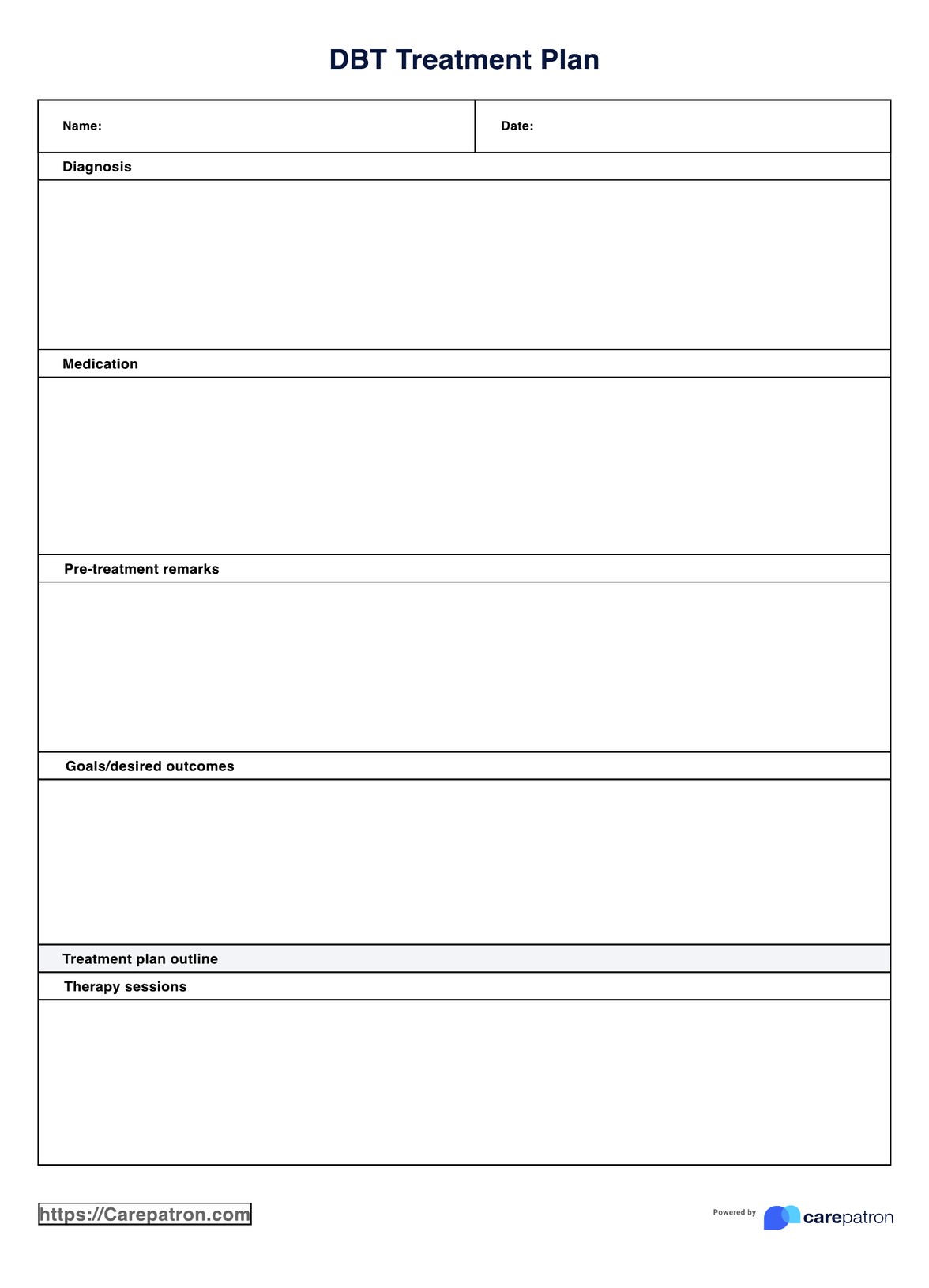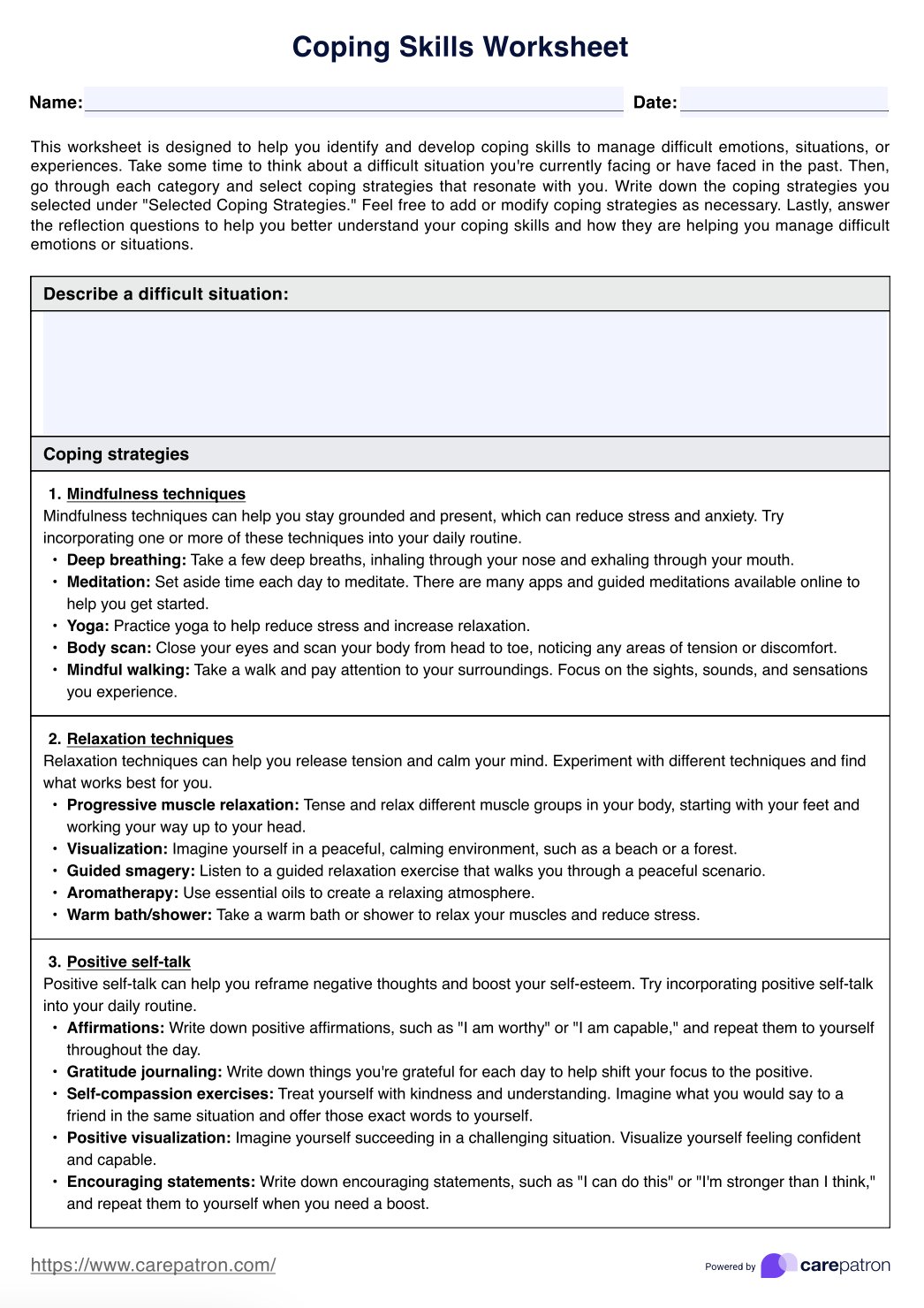Adjustment Disorder PDF
Navigate the complexities of adjustment disorder with our comprehensive PDF guide. Explore symptoms, diagnosis criteria, and treatment options here.


What is adjustment disorder?
Adjustment disorder is a mental health condition characterized by emotional or behavioral symptoms in response to an identifiable stressor or change in one’s life.
The DSM-5 (Diagnostic and Statistical Manual of Mental Disorders, Fifth Edition) categorizes it as a group of conditions that occur when an individual is unable to cope with or adjust to a particular source of stress, such as major life changes, illness, or relationship issues. The key feature of adjustment disorder is the development of emotional or behavioral symptoms in response to the stressor, which occurs within three months of onset.
These symptoms cause significant impairment in social, occupational, or other important areas of functioning. They are out of proportion to the severity or intensity of the stressor, considering the cultural, individual, or contextual factors.
Adjustment Disorder PDF Template
Adjustment Disorder PDF Example
Types of adjustment disorders
Adjustment disorders are a group of conditions that occur in response to a significant life change or stressor. The Diagnostic and Statistical Manual of Mental Disorders, Fifth Edition (DSM-5), categorizes adjustment disorders based on the primary symptoms exhibited. Understanding these types is crucial for healthcare professionals to diagnose and provide targeted treatment accurately.
Adjustment disorder with depressed mood
This adjustment disorder is primarily characterized by sadness, hopelessness, and a pervasive lack of enjoyment or pleasure in life's activities. Individuals may find it difficult to face daily routines and may exhibit symptoms similar to those of major depressive disorder, although typically less severe.
Adjustment disorder with anxiety
Characterized by excessive worry, nervousness, or fear about the future, adjustment disorder with anxiety often involves apprehension about everyday situations. This anxiety can be debilitating, affecting the individual's ability to function normally in social, occupational, or other important areas.
Adjustment disorder with mixed anxiety and depressed mood
This category describes individuals who experience a combination of depressive and anxious symptoms, neither of which predominates. This mixed emotional state can complicate the treatment approach, as both symptoms may require attention.
Adjustment disorder with disturbance of conduct
Manifesting through behavioral issues, this type of adjustment disorder involves actions that violate societal norms or the rights of others. Symptoms might include impulsivity, recklessness, vandalism, or engaging in legal troubles, reflecting an underlying struggle to cope with emotional or situational stress.
Adjustment disorder with mixed disturbance of emotions and conduct
Individuals with this type of adjustment disorder exhibit both emotional symptoms (such as depression and anxiety) and disturbance of conduct. This combination can be particularly challenging to manage, as it impacts the individual's emotional state and behavior towards others.
Adjustment disorder unspecified
This category is for reactions to identifiable stressors that don't fit the above classifications, including physical complaints, social withdrawal, or other behavioral changes not covered by the specified types. This type acknowledges the diverse ways individuals may respond to stress and the complexity of diagnosing and treating adjustment disorders.
By delineating these types, the DSM-5 provides a framework for healthcare providers to assess and address the varied manifestations of adjustment disorders. Recognizing the specific type of adjustment disorder is essential for developing an effective treatment plan that addresses each patient's unique challenges.
Symptoms of adjustment disorder
Adjustment disorder manifests through various symptoms that can significantly impact an individual's daily life and overall well-being. While diverse, these symptoms share common threads that help identify the disorder and provide the necessary support and treatment.
Marked distress out of proportion to the severity of the stressor
One of the hallmark symptoms of adjustment disorder is experiencing an intense emotional reaction that seems excessive, given the nature of the emotions and the stressor. This could manifest as overwhelming feelings of sadness, anxiety, or distress following events that would not typically elicit such a strong response. The disproportion between the stressor and the emotional reaction is key to recognizing adjustment disorder.
Significant impairment in social, occupational, or other important areas of functioning
Adjustment disorder can lead to notable difficulties in maintaining normal functioning in various aspects of life. This may include challenges in performing at work or school, maintaining social relationships, and fulfilling daily responsibilities. The impairment is significant enough to disrupt normal activities and reduce the quality of life.
Emotional symptoms such as sadness, hopelessness, or excessive worry
Individuals with adjustment disorder often experience a range of emotional symptoms, including persistent sadness, feelings of hopelessness, depression and excessive worry. These emotional states can be intense and pervasive, affecting the person's outlook on life and ability to engage in enjoyable activities.
Behavioral symptoms, including changes in conduct and activities
Adjustment disorder can also manifest through behavioral changes. This might include withdrawal from social activities, changes in eating and sleeping patterns, or risky behaviors. These changes in conduct often serve as coping mechanisms or ways of expressing the distress caused by the disorder.
Difficulty coping with daily routines and responsibilities
A key indicator of adjustment disorder is difficulty coping with day-to-day routines and responsibilities. Individuals with mental disorder may find it challenging to concentrate, make decisions, or manage the tasks of daily living. This symptom significantly contributes to the impairment in functioning that characterizes the disorder.
Understanding these symptoms is crucial for identifying adjustment disorders and initiating appropriate interventions. By recognizing the signs early, individuals can seek the support and treatment needed to navigate the stressors causing the disorder and improve their quality of life.
Adjustment disorders criteria for diagnosis
The Diagnostic and Statistical Manual of Mental Disorders, Fifth Edition (DSM-5), provides updated criteria for diagnosing adjustment disorders, focusing on the nuanced response of individuals to various stressors.
These criteria are essential for mental health professionals in accurately identifying and categorizing adjustment disorders. Here they are, exactly as they appear in the DSM-5-TR:
A. The development of emotional or behavioral symptoms in response to an identifiable stressor(s) occurring within 3 months of the onset of the stressor(s).
B. These symptoms or behaviors are clinically significant, as evidenced by one or both of the following:
- Marked distress that is out of proportion to the severity or intensity of the stressor, taking into account the external context and the cultural factors that might influence symptom severity and presentation.
- Significant impairment in social, occupational, or other important areas of functioning.
C. The stress-related disturbance does not meet the criteria for another mental disorder and is not merely an exacerbation of a preexisting mental disorder.
D. The symptoms do not represent normal bereavement and are not better explained by prolonged grief disorder.
E. Once the stressor or its consequences have terminated, the symptoms do not persist for more than an additional 6 months.
Specify whether:
- F43.21 With depressed mood: Low mood, tearfulness, or feelings of hopelessness are predominant.
- F43.22 With anxiety: Nervousness, worry, jitteriness, or separation anxiety is predominant.
- F43.23 With mixed anxiety and depressed mood: A combination of depression and anxiety is predominant.
- F43.24 With disturbance of conduct: Disturbance of conduct is predominant.
- F43.25 With mixed disturbance of emotions and conduct: Both emotional symptoms (e.g., depression, anxiety) and a disturbance of conduct are predominant.
- F43.20 Unspecified: For maladaptive reactions that are not classifiable as one of the specific subtypes of adjustment disorder.
Specify if:
- Acute: This specifier can be used to indicate persistence of symptoms for less than 6 months.
- Persistent (chronic): This specifier can be used to indicate persistence of symptoms for 6 months or longer. By definition, symptoms cannot persist for more than 6 months after the termination of the stressor or its consequences. The persistent specifier therefore applies when the duration of the disturbance is longer than 6 months in response to a chronic stressor or to a stressor that has enduring consequences.
Differences from DSM-IV to DSM-5
The transition from DSM-IV to DSM-5 brought clarifications and refinements rather than sweeping changes to the criteria for diagnosing adjustment disorders. Below is a summary of changes for each criteria that changed between DSM-IV and DSM-5:
- Criteria B (Significance of Symptoms): DSM-5 has expanded this criterion to include that the marked distress should be "out of proportion to the severity or intensity of the stressor, taking into account the external context and the cultural factors that might influence symptom severity and presentation."
- Criteria C (Exclusion of Other Disorders): In DSM-IV, it was specified that the disturbance should not meet the criteria for another specific Axis I disorder and not merely be an exacerbation of a preexisting Axis I or Axis II disorder. DSM-5 simplifies this by stating that the disturbance should not meet the criteria for another mental disorder and not merely be an exacerbation of a preexisting mental disorder.
- Criteria D (Bereavement): Both versions state that the symptoms should not represent bereavement. However, DSM-5 specifies "normal bereavement," indicating a clarification in distinguishing between normal grieving processes and adjustment disorders.
- Subtypes and Specifiers: DSM-5 has introduced specific codes for different subtypes of Adjustment Disorders, such as "With Depressed Mood," "With Anxiety," "With Mixed Anxiety and Depressed Mood," etc. This change aims to provide more precise categorization and facilitate better treatment planning.
Overall, the changes from DSM-IV to DSM-5 in diagnosing Adjustment Disorders reflect a greater emphasis on cultural and contextual factors, a simplification of exclusion criteria, and a more detailed approach to subtyping the disorder. These modifications aim to improve the accuracy of diagnoses and the effectiveness of treatment strategies.
Treatment
Treatment for adjustment disorder aims to relieve symptoms and assist the individual in adapting to the stressor. This may include psychotherapy, such as cognitive-behavioral therapy (CBT), to help develop coping mechanisms and strategies to deal with stressors more effectively.
In some cases, medication may be prescribed to manage symptoms of depression or anxiety. Support groups and education about the disorder are also beneficial components of treatment.
Commonly asked questions
Cognitive-behavioral therapy (CBT) is often considered the most effective therapy for adjustment disorder, focusing on changing negative thought patterns and developing coping strategies.
Mindfulness exercises, relaxation techniques, and regular physical activity can be beneficial for managing symptoms of adjustment disorder.
Adjustment disorder can be diagnosed when an individual experiences significant emotional or behavioral symptoms in response to an identifiable stressor, typically within three months of the stressor's occurrence.

.jpg)
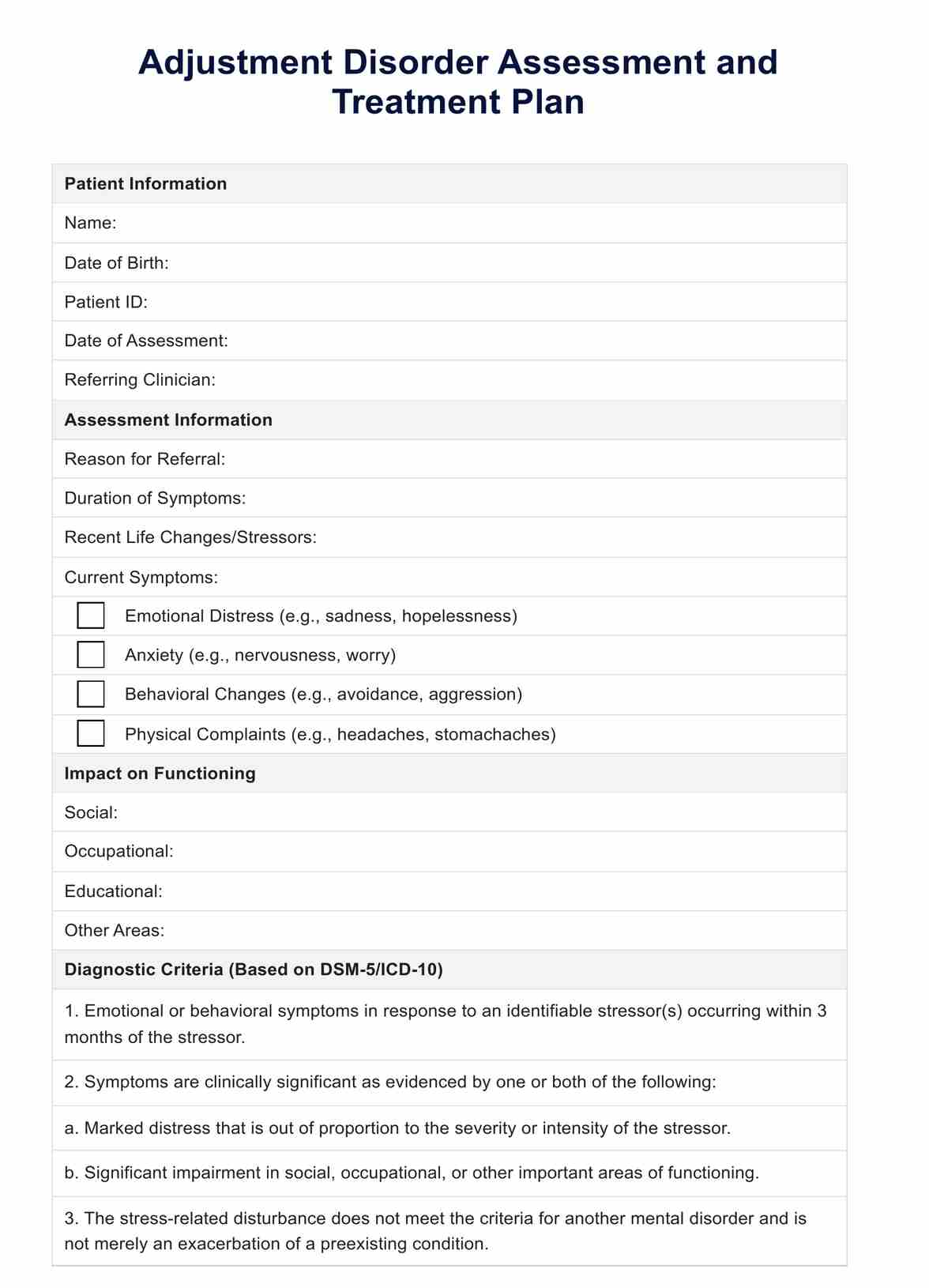
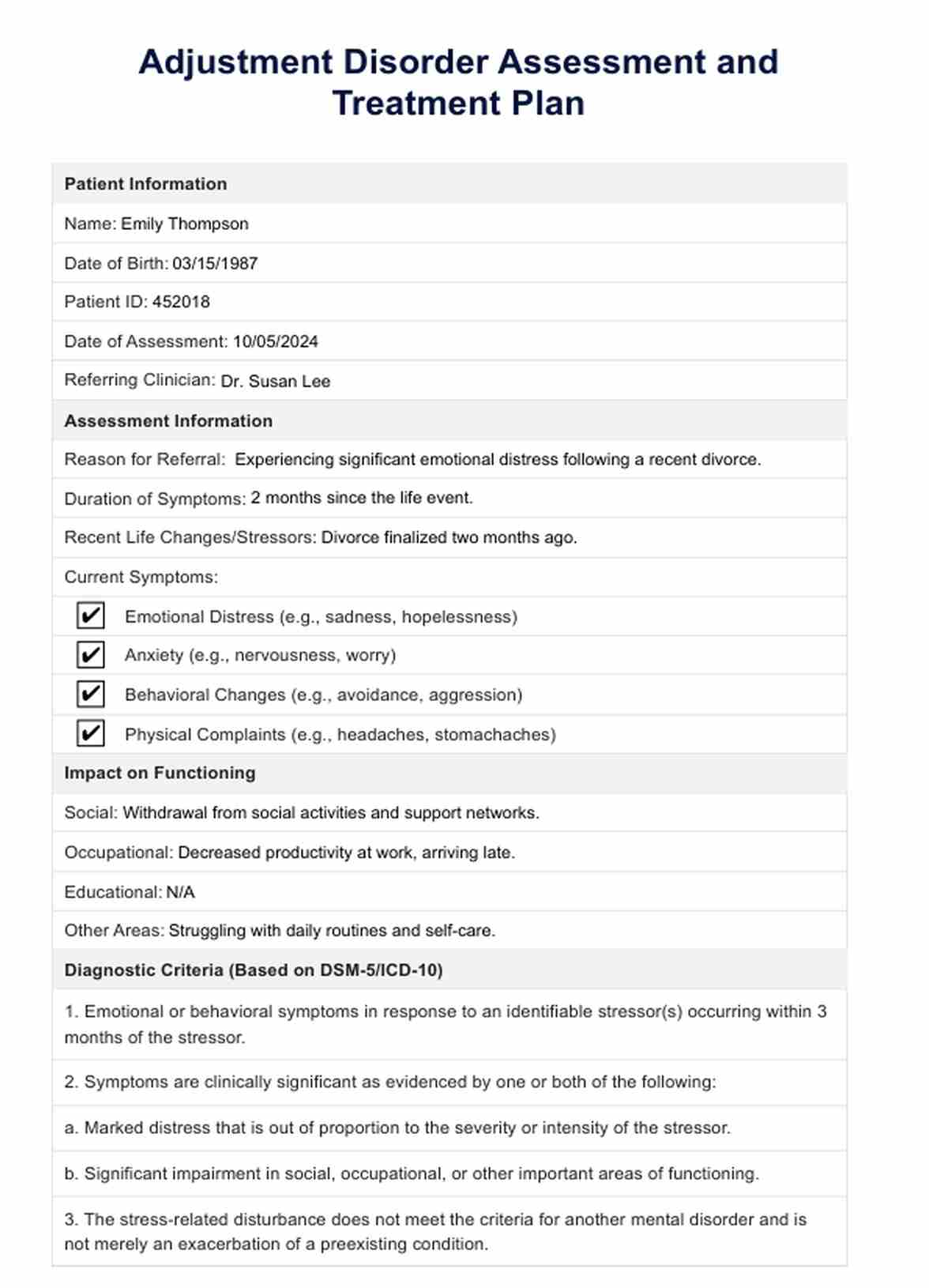

















-template.jpg)



















































































